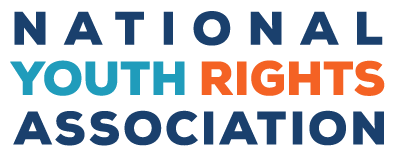With the new DSM (Diagnostic and Statistical Manual of Mental Disorders V) coming out in 2012 , version 5 has already been marred in controversy, lack of transparency, and predictably, an increase in the number of contributors with industry ties (nearly 70%)–up 14% from the last installment. What does this mean for young people? We can probably expect more “disorders” in the near future, and with “Bipolar Disorder” crawling down into the cradle these days, the probability doesn’t seem so far off. We already have kids as young as four on psychoactive medications for conditions not proven to exist in childhood (expect them to be “proven to exist” in the near future), an over-abundance of ADHD diagnoses for kids who just need to play, and for teens, the old favorite–“Oppositional Defiant Disorder.”
What’s next? How about “Video Game Addiction,” a move to target young people by pathologizing their passtimes. How about the fact that the APA DSM revision team retained a certain professional by the name of Zucker who continues to procure psychiatric “treatments” for LGBT youth, with the belief that it is caused by “poor parenting.”
In this age where everyone and his uncle can be diagnosable, and particularly in light of all the targetted pathologizing of young people, perhaps it would be fun to throw the noose back at the society that is creating all these unnecessary “epidemics” with a taste of their own medication–a little something we can call “Over Protective Parental Disorder.” Let’s just try it on for size and see if it fits just as well:
—-
DSM V Over Protective Parental Disorder (OPPD) Criteria:
A. Either obsessions or compulsions:
Obsessions as defined by (1), (2), (3), and (4):
(1) recurrent and persistent thoughts, impulses, or images that are experienced at some time during the disturbance, as harmful to children and inappropriate and that cause marked anxiety or distress.
(2) the thoughts, impulses, or images are not simply excessive worries about real-life problems
(3) the person attempts to eliminate such thoughts, impulses, or images, or to neutralize them with actions intrusive to others, especially children
(4) the person denies that the obsessional thoughts, impulses, or images are a product of his or her own mind (not imposed from without as in thought insertion)
Compulsions as defined by (1) and (2):
(1) repetitive behaviors or mental acts that the person feels driven to perform in response to an obsession, or according to rules that must be applied rigidly
(2) the behaviors or mental acts are aimed at preventing or reducing distress or preventing some dreaded event or situation; however, these behaviors or mental acts either are not connected in a realistic way with what they are designed to neutralize or prevent or are clearly excessive.
B. At no point during the course of the disorder, the person has recognized that the obsessions or compulsions are excessive or unreasonable.
C. The obsessions or compulsions cause marked distress, are time consuming (take more than 1 hour a day), or significantly interfere with the person’s normal routine, occupational (or academic) functioning, or usual social activities or relationships.
D. The disturbance is not due to the direct physiological effects of a substance (e.g., a drug of abuse, a medication) or a general medical condition.
—-
Does this sound like anyone you know?






Adults would be “oppositional” and “defiant” too if they had to put up with comparatively very powerful people constantly invading their privacy and attempting to rigidly control every facet of their lives. Being “oppositional” and “defiant” in such circumstances is normal, not a “disorder.”